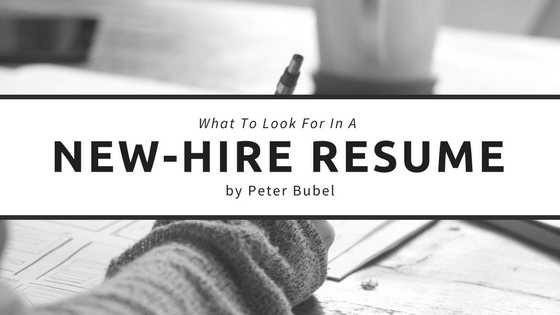Reading over hundreds of resumes and selecting the best ones is not only a time-consuming task but is also a significant part of building a successful company. It may seem daunting, but there are ways to make this important, yet tedious task, a little less stressful.
When staring at an overwhelmingly large stack of resumes and cover letters, the first place to start is a simple scanning process. Take a quick look at each resume and cover letter for specific things that give a “green light” or “red light” for that particular candidate. Those that have green light material go in the “maybe” pile for further examination and those with red light material go in the “nope” pile.
When doing a quick resume scan, look for these signs:
- Relevant Keywords: If you only look for one thing while doing your scan process, let it be this. Think about keywords that are often used within your company or industry before beginning your overlook. Search for those words that best fit the job title with more importance placed on the most recent positions.
- Lack of Professionalism: A resume is a candidate’s first impression on a potential employer. If their resume is not carefully crafted, and (practically) flawless, it says a lot about who that employee will be over the long term. If they can’t take the time to create an honest, upbeat and professional resume, they most likely won’t take that time with their work either.
- Readability: From first glance, the resume should be inviting and attractive. Words should be clear and easy to read, and the organization of the information should allow for an easy read.
Once you have done a quick scan and narrowed that vast pile down, it is time to begin a more thorough examination of each candidate’s qualities and experience. While there are many factors that come into play for each individual, there are a few essential items that point to a great potential employee.
Succinct Content
It is vital for a candidate to be able to communicate their expertise without using too much industry terminology or jargon. The ability to convey their message while also simplifying it in a way that can be understood by those outside of the industry is a useful tool when working with clients and business partners; it can also be a great skill to have when training new employees or working on a team. The content should also contain no spelling or grammar mistakes. If the resume looks like it hasn’t been reread or edited, it would be easy to assume that their work would also go unchecked.
Longevity
When assessing each candidate’s experience, take a moment to look at the date span of each position. Shorter time-spans between jobs could suggest that the employee might not be interested in a long-term commitment to building a company. Longer time-spans may indicate that an individual is involved in advancing skills and sticking with a company as it grows.
Tailored Messaging
If there is a signal that an applicant should immediately be put in the interview process, it is tailored messaging. If the resume and cover letter seem to have had phrases copy and pasted in, it may imply that the applicant is sending out the same resume to multiple companies. Instead, look for resumes that seem to have been crafted specifically for the job title and description that was posted.
Resumes are a great way to get an idea of who is a good possible fit and who may not be. However, resumes can only share so much about a candidate. If you are unsure about a resume and cover letter, a quick phone interview could give you an idea of what to do next.

